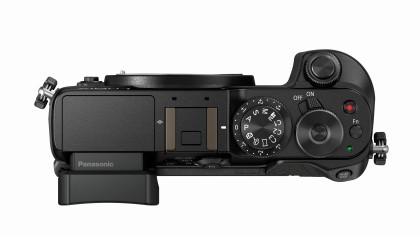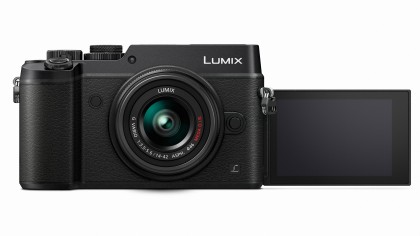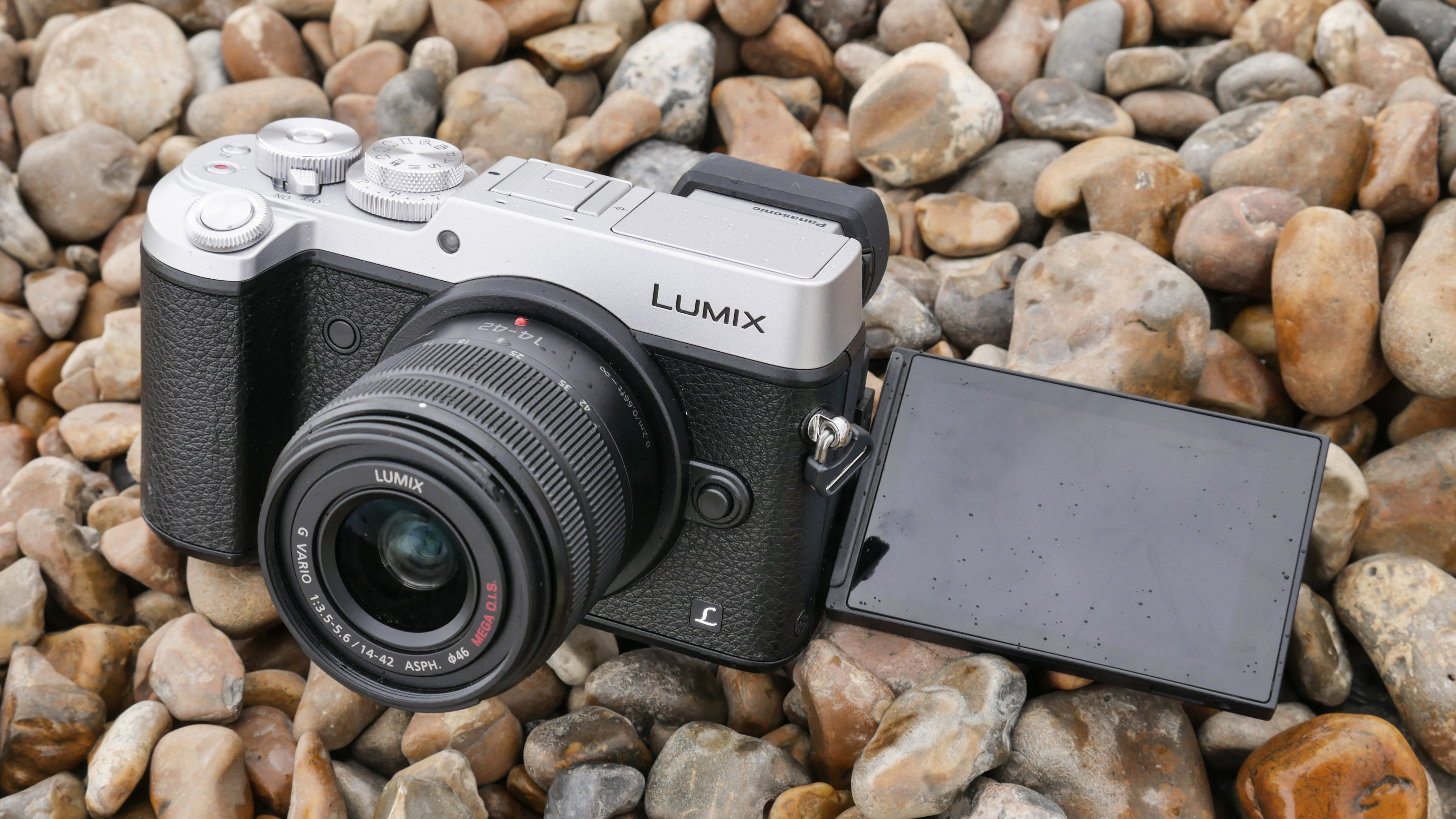Why you can trust TechRadar
As mentioned, the GX8 has a flatter, more rectangular shape than the G7 and GH4. Nevertheless it has a deep, effective front grip and a shallow thumb-ridge that gives just enough purchase – though it wouldn't hurt if this was a little more pronounced and more ergonomically shaped.
While I find there's enough space to accommodate my thumb on the back of the camera, those with bigger hands may find that their thumb feels a little confined, and may accidentally press the Quick Menu or Display buttons from time to time.
That said, its magnesium alloy body gives the GX8 a higher-quality feel than the G7, and it's also splash- and dust-proof, so it can be used in more inclement conditions. The new camera is also noticeably larger than the GX7 in every dimension, but it looks a little cleaner and has a bigger front grip.
Like the GX7, the GX8 has a dual-dial control system, but the GX8's dials are bigger and/or easier to reach. The front dial, for instance, which surrounds the shutter release, is easier to reach because the shutter button has been moved forwards to the top of the grip, while the rear dial is larger, and located on the top plate within striking distance of the thumb rest.

Like the GX7, the GX8 has a mode dial on the top plate for selecting the exposure mode, but this has now shifted from the far right towards the middle, and it sits above a new exposure compensation dial that has settings running from -3EV to +3EV in 1/3EV steps. As well as making it very quick and easy to adjust exposure, having a dedicated dial enables you to check the setting even before the camera is turned on; I was able to adjust exposure compensation using my thumb on the dial while looking in the viewfinder.
After shooting with the Panasonic G7, I found that I missed its drive mode dial on the GX8. Amongst other things, on the G7 this offers a quick way of switching between single shooting, continuous shooting and 4K Photo mode. While 4K Photo mode is useful for shooting developing action, it only generates 8Mp JPEGs, which have to be extracted from the video footage. Consequently, there's good reason to want to switch back to 20Mp raw file shooting quickly.
On the GX8 there are several ways of accessing the various shooting options. The most obvious are via the drive mode button or the Quick Menu – which is accessed by pressing the Q button. By default there's an on-screen function button to access 4K Photo mode, and it's possible to customise a physical button to reach the options, but neither is quite as quick as flicking a dial round.
Screen
Having a vari-angle screen is a big improvement on a tilting unit – it's much more versatile, enabling you to compose low- or high-level shots in landscape or portrait format, and to make the most of the facility to adjust settings using the touchscreen.
One issue I encountered when shooting at a high or low angle, however, was that it can be hard to locate some of the buttons on the back of the camera by feel alone. The Review, Display, Delete and navigation buttons all protrude clear of the camera body, making them pretty easy to find, but the Quick Menu and lower Function buttons are flush with the body, which makes them harder to locate. There's also no on-screen option to bring up either the Quick or main Menus.
I'm a fan of Panasonic's Touch Pad AF system, which enables you to set the AF point using the screen while looking into the viewfinder. However, when using it on the GX8 there were a frustrating number of occasions when the AF point started to resize rather than move to where I wanted it to be – it would be nice to be able to lock-off the resizing.

When shooting in landscape format, left eye users may find that they sometimes shift the AF point with their nose when using Touch Pad AF. I found it only happened occasionally, as the GX8's EVF protrudes quite some way beyond the screen, and if necessary the viewfinder can be tilted upwards a little to prevent your nose from touching the screen. It can also be an issue when shooting in upright format, as the top of the screen is within touching distance of your nose.
The new electronic viewfinder (EVF) is also a step up, providing a clear view with no visible texture or noise, and the image it displays is a good match with the captured shot. It's also a big device, and I found that when shooting upright images I had to consciously look up and down towards the outer edges to check composition – but that's a problem I don't mind having.
In addition, the viewfinder's refresh rate seems high, and I was able to follow the movement of body boarders and surfers as they zipped along some stormy waves.
There's also a sensor which activates the EVF and turns off the screen when the camera is held to your eye. As usual this can be a pain when you're adjusting settings or manipulating the camera into position, as your hand turns off the screen as it passes near the viewfinder, but there's a handy button that can be used to override the sensor and keep the screen on.
Although an electronic level can be useful, the GX8's has quite a wide margin of error, which means it's possible to produce images that look significantly tilted when the level indicates that the camera is straight.
While it's aimed at experienced and enthusiast photographers, the GX8's controls and menus are arranged well, and it's relatively easy to get to grips with using it. The build is reassuring and the camera responds quickly to adjustments, whether it's a tap on the screen or a press of a button.
It's helpful that the Quick Menu is customisable, but it would be nice if there was a customisable main menu screen as well.
